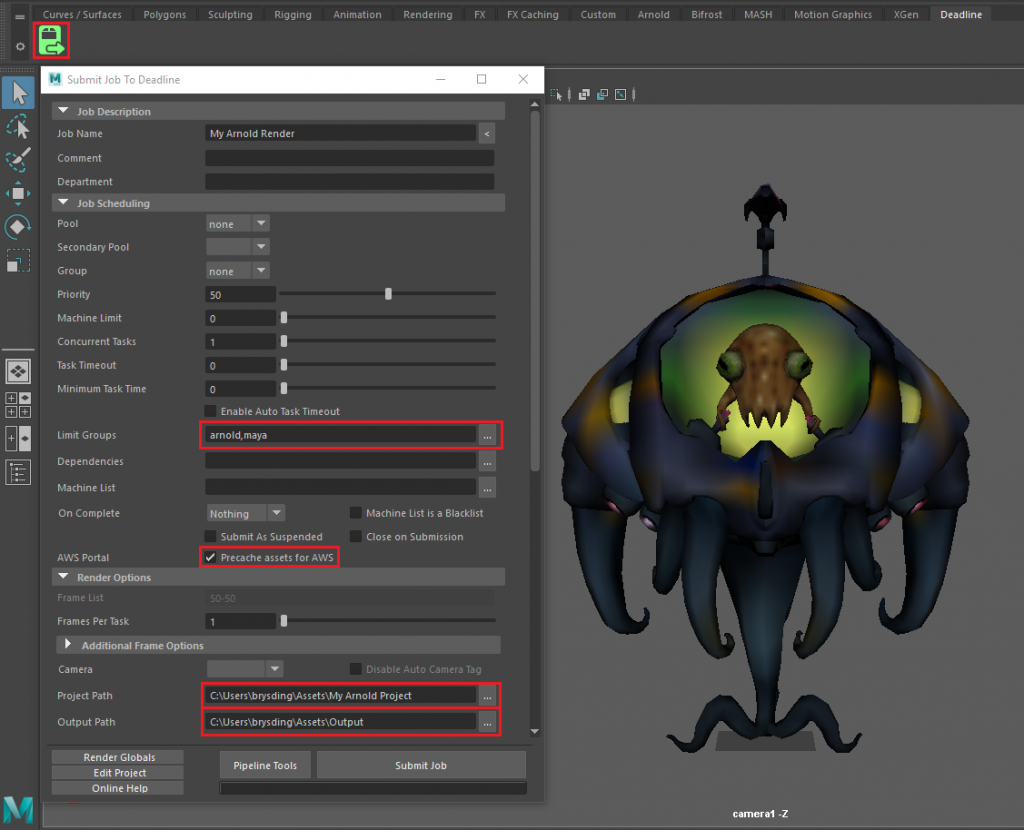AWS for M&E Blog
Category: How-To
Build your own VAST 3.0 response XML to test with AWS Elemental MediaTailor
In a previous blog, AWS Elemental MediaTailor Supported Video Ad Serving Protocols, we talked about the various video ad protocols that AWS Elemental MediaTailor supports. In this post, we will focus on one of those protocols, namely VAST, and show how you can build a simple VAST response XML which you can use in lieu […]
Rendering with AWS portal in Thinkbox deadline
Post by Bryson Ding, AWS INTRODUCTION The new AWS Portal feature in Deadline 10 supports many content creation applications, including Autodesk Maya and Autodesk Arnold. This feature allows you to use the distributed computing power of Amazon EC2 Spot Instances to optimize your Maya/Arnold workflow, and in this post, we will outline the necessary steps […]
Part 2: How to compete with broadcast latency using current adaptive bitrate technologies
Part 1: Defining and Measuring Latency Part 2: Recommended Optimizations for Encoding, Packaging, and CDN Delivery (this post) Part 3: Recommended Optimizations for Video Players Part 4: Reference Architectures and Tests Results Part 2: Recommended Optimizations for Encoding, Packaging, and CDN Delivery In the first part of this blogs series, we covered why latency is a problem […]
Utilizing dynamic licensing in Thinkbox Deadline (Version Deadline 10 or later)
Guest post by Ryan Russell, Manager, Software Development, AWS Thinkbox INTRODUCTION Prior to Thinkbox Deadline 10, a render node could be configured to use either Usage Based Licensing (UBL) or traditional floating licenses. While this gave you full control over how your render nodes were licensed, it wasn’t exactly the most flexible system when you […]
Part 1: How to compete with broadcast latency using current adaptive bitrate technologies
Part 1: Defining and Measuring Latency (this post) Part 2: Recommended Optimizations for Encoding, Packaging, and CDN Delivery Part 3: Recommended Optimizations for Video Players Part 4: Reference Architectures and Tests Results Part 1: Defining and Measuring Latency Why is latency a problem for live video streaming? Whenever content delivery is time sensitive, whether it […]
Choosing the right Amazon EC2 Instance types for rendering with Thinkbox Deadline (Part 2)
Previously, I published a post detailing the differences between the Amazon EC2 instance types available on AWS. This time, I’m not going to focus on the differences between the instance types. Instead, I focus on how to pick the right instance type for you. One size fits all? I’d love to be able to end […]
Choosing the right Amazon EC2 instance types for rendering with Thinkbox Deadline (Part 1)
Thinkbox Deadline 10 introduced the AWS Portal Panel, which helps you scale up your render farm with Amazon EC2 Spot Instances. You can get started with AWS Portal by following the instructions at AWS Portal Setup. After you’ve launched your infrastructure, you’re ready to start your Spot Fleet requests. You’ve chosen the software to render […]
APN Blog: Using the new G3 Instance to playout an IP-based ultra high definition channel on AWS
AWS Partner Cinegy has long been an advocate of IP-based video workflows and understands that maintaining visual quality whilst reducing bandwidth consumption is an ongoing challenge with the increasing data requirements of formats such as Ultra High Definition (UHD). In this post, Cinegy demonstrates how to deploy a fully-functional playout engine using Amazon EC2 resources […]






